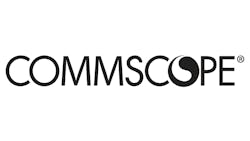CommScope, which reached a deal to sell its CCS and DAS divisions to Amphenol, sees potential in its Access Network Solutions (ANS) and RUCKUS, two segments that saw growth during the second quarter.
During the second quarter, ANS and RUCKUS contributed combined revenues of $513 million, 58% above 2024.
Speaking to investors during its second-quarter earnings call, Charles Treadway, CEO of CommScope, sees future potential in both segments.
“I am very excited for the future of ANS and RUCKUS as both businesses have recovered from their prior year challenges and are positioned for growth,” he said.
Next-Gen ANS pickup
In the ANS division, CommScope is seeing most of its revenue success coming from its next-gen products, with legacy technology accounting for less than 50%.
ANS net sales were $322 million, up 65% in the second quarter compared to the prior year, and adjusted EBITDA was up 132%, primarily driven by a record deployment of its new DOCSIS 4.0 amplifier and node products as well as higher license sales.
Like earlier transitions in the cable industry, Treadway said that as “the upgrade cycle continues to gain momentum, we'd expect the legacy business to continue to decline and the next-gen business to replace that revenue.”
However, he cautioned that cable MSO DOCSIS 4.0 upgrades are only at the starting gate.
“Despite the optimism for 2025, we are still in early phases of the DOCSIS 4.0 upgrade cycle as customers continue to evaluate the path and timing of upgrades,” Treadway said. “The business remains well-positioned to take advantage of upgrade cycles as we have decades of experience with customer ecosystems, the largest installed base, and the broadest suite of products.”
CommScope’s DOCSIS 4.0 amplifier business saw positive results for both Extended Spectrum DOCSIS (ESD) and Full Duplex DOCSIS (FDX), an architecture favored by Comcast. In this architecture, HFC is built to 1.2 GHz, paired with an FDX band that allows upstream and downstream traffic to occupy the same block of spectrum. ESD targets HFC networks built to 1.8GHz while keeping upstream and downstream traffic operating in separate, dedicated spectrum.
“Our FDX amplifier deployment with Comcast has gone well, and this is reflected in our results,” Treadway said. “In addition, our ESD amplifier sales have increased as we have won businesses with several customers, including Charter.”
Additionally, CommScope is seeing momentum for its virtual CMTS platforms, which integrate technology from its Casa acquisition.
“We have also moved forward with our new unified products as they are now in the lab testing phase and expected to be available by the end of this year and into next year as we release additional products,” Treadway said. “These positive results reflect our strategy shift to partnering directly with major MSOs to develop key products for them versus a one-size-fits-all strategy.”
RUCKUS scales traction
Like its ANS division, RUCKUS is benefitting from demand for new products and its vertical market strategy coming into fruition.
RUCKUS revenue was up 47% in the second quarter compared to the prior year.
During the second quarter, CommScope saw continued improved demand for RUCKUS driven by its new Wi-Fi 7 products and subscription services. The company also launched its suite of next-generation AI-driven Wi-Fi 7 solutions tailored for the hospitality industry.
AI is also playing a role in its RUCKUS segment. Agentic AI powers its products within its AI-driven cloud-native RUCKUS One platform. Earlier in the first quarter, CommScope unveiled a new wave of AI-driven enterprise networking solutions featuring GenAI, edge AI, and intent-based AI.
Treadway said he’s bullish about RUCKUS’ prospects. “With our strong year-over-year improvements, we feel that challenges in 2024 with channel inventory are now well behind us,” he said. “We believe the RUCKUS business is well-positioned for strong growth in 2025, driven by normalized channel inventory and growing demand.”
With the advent of managed Wi-Fi and other broadband solutions for brownfield multi-dwelling unit (MDUs), CommScope is seeing additional traction in the North American service provider market as more customers are interested in its RUCKUS One MDU solutions.
“These solutions take advantage of our RUCKUS One platform and help service providers accelerate time to market and reduce operational costs,” Treadway said. “This fundamentally changes the deployment economics and delivers faster return on investment.”
Second quarter strength
Due to stronger-than-expected results across all segments, CommScope reported net sales of $1.39 billion, up 31.7% from the prior year.
Net sales increased across all regions, except the Caribbean and Latin America region and Canada, in the second quarter of 2025.
Driven by normalized inventory in the channel and stronger market demand as well as its vertical market strategy, RUCKUS net sales of $190 million increased by 47% versus the second quarter of 2024.
ANS sales were $322.5 million, up from $195.4 million in the same period last year.
Despite the announced deal to sell the CCS business to Amphenol, second-quarter CCS revenue grew 20% year-over-year. For the second quarter, the enterprise fiber business continued to generate substantial growth with year-over-year revenue up 85%.
“The CCS segment will continue to be a strong cash flow generator between signing and the close of this transaction,” Treadway said.
For related articles, visit the Business Topic Center.
For more information on high-speed transmission systems and suppliers, visit the Lightwave Buyer’s Guide.
To stay abreast of fiber network deployments, subscribe to Lightwave’s Service Providers and Datacom/Data Center newsletters.
About the Author
Sean Buckley
Sean is responsible for establishing and executing the editorial strategy of Lightwave across its website, email newsletters, events, and other information products.


